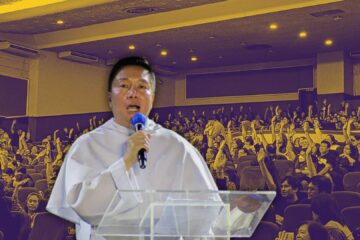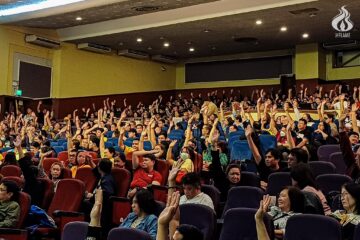THE PANDEMIC has forced journalists to do news coverage at home and wait for the statements online, making the flow of information one way, a business journalist and Artlet alumna said Friday in a webinar organized by the UST Journalism Society.
Macroeconomic and urban development story writer for BusinessMirror Marie Carisa Ordinario discussed Manny Mogato’s Center for Media Freedom and Responsibility piece titled ‘Pandemic Blues’ that focused on the journalists’ struggle in remote reporting.
Due to quarantine restrictions and health risks, journalists are forced to work from home and wait for the statements online in which news sources could control the information in one direction.
“The best thing we can do is to wait for their statements. The problem with that, of course we know, is that the government or businesses—they can spew their propaganda […] nagiging one way ‘yung flow ng information,” Ordinario said.
She also mentioned that some sources tend to leave the online messages on read because of the difficult questions.
As events were held online, reporters struggled with interviewing the sources live as some questions were chosen and screened to avoid responding to hard questions.
ABS-CBN senior reporter Pia Gutierrez said that the pandemic has affected the reporters’ interaction with the public officials.
Since the pandemic, President Rodrigo Duterte’s speeches had already been edited before the broadcast. Gutierrez viewed this as censoring the president as he is known for speaking his mind and being unfiltered.
Gutierrez said that Duterte had not answered questions nor faced reporters since the pandemic.
She also mentioned that in palace briefings, journalists could ask questions via Zoom line up in the press conference or it could be sent before the press briefing.
“This has been the strategy of the administration, to livestream,” Gutierrez said since the briefings and coverage of Malacañang are held online.
Gutierrez said that the reader of the question is in control of their liking, in an online setting a journalist is not able to do a follow-up question.
Gutierrez questioned the press freedom in online briefings due to instances where spokesperson Harry Roque would not entertain the question or mute journalists so that there would be no more follow-up.
Positive impact on media
Media coverage during the pandemic is convenient as the sessions can be recorded online and anyone has the option to re-watch the recorded session on YouTube and Facebook, while Twitter helps in monitoring local and international news, Ordinario said.
Communicating and monitoring beats also became easier with the use of online messaging applications, Ordinario added.
“The pandemic has forced us to upgrade our skills to adapt to an increasingly digital environment, the pandemic has accelerated the digitalization of news especially with the shift towards working from home,” Gutierrez stated.
Gutierrez considered this as an opportunity to interact with the audience since most of their audience turned to digital media, and said that they could improve their work through the audience’s criticisms.
The 5th John Jefferson Siler Webinar: Where Media Stands Today was organized by the UST Journalism Society via Facebook live. F



